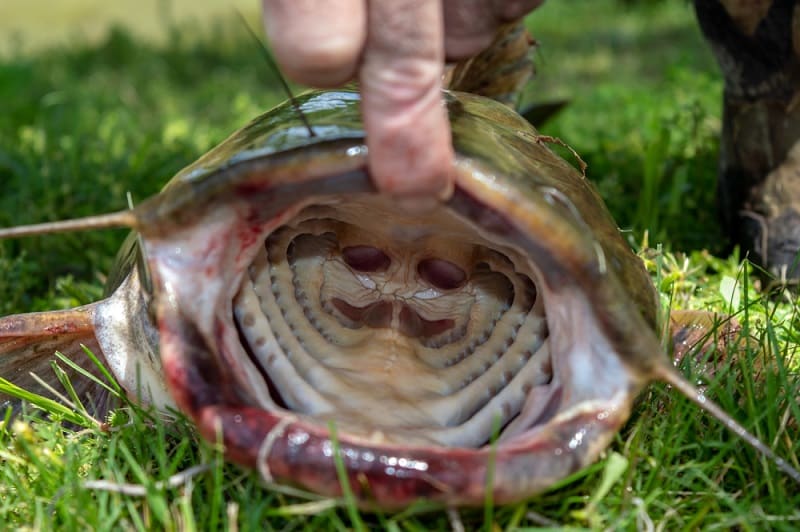
Catfish Teeth
Catfish teeth, or lack of, is an important thing for anglers to learn about as they attempt to bring in an impressive harvest. If an angler doesn’t know about catfish teeth, there is a significant chance that they are going to get injured, especially if they are using a lip grip under the impression that catfish don’t have teeth.
Catfish Do Not Capture Prey Using Teeth
This is where the myth that catfish do not have teeth comes from. Typically, catfish will use a sucking motion to suck in their prey, and then gulp them down. Because this fish doesn’t bite its prey in the beginning, many people believe that catfish do not have any teeth at all, but this is simply not true.
Rows of Teeth
Catfish teeth are in rows in the back of their mouth. Keep in mind that this is a general statement and applies to most catfish species. Some have catfish teeth in the front of their mouths as well, but they have not used the way that humans use their teeth.
The number of catfish teeth often depends on the species of fish. For example, the Goonch catfish has four rows and hundreds of teeth. Smaller species of fish are known for having fewer teeth than larger fish.
They Can Be Sharp
Catfish teeth might not be used for catching prey, but that does not mean they are dull. Those rows of teeth could easily injure someone that is out noodling for the day and send them to the hospital. Goonch catfish have razor-sharp teeth that can effortlessly puncture the skin. How sharp they are is dependant upon the species of fish.
They Can Be Harmless
Other species of catfish, like the ones that most fishermen are after when they are out on the boat, are relatively harmless. If a person gets a nip while they are unhooking a fish, it will feel like a person is sliding a piece of sandpaper across their skin. Usually, these teeth will not even puncture the skin, much less require a visit to the local emergency room. If this is the type of fish that an angler is after, they will probably never even think about catfish again. These fish pose no threat from their teeth when being handled.
Noodling Is A Different Story
Keep in mind that those dull teeth will simply graze the skin when unhooking a catfish from the line, but noodling is a bit different. When a person goes noodling, they often stick their arm as deep as they can into the mouth of the catfish. Then, those teeth will clamp down while the fish violently jerks in an effort to get free. When this happens, those dull catfish teeth can easily get through the skin. Experienced noodlers often have at least one or two scars from this.
Noodling Sleeve
To protect themselves from getting more scars, most people opt for a noodling sleeve. It covers the arm up to the elbow or shoulder depending on which product is purchased. A noodling sleeve makes it difficult for the teeth to get to the skin so that abrasions are impossible.
There are plenty of myths about catfish teeth that you will come across online. Fishermen that are using a net or pole will likely never encounter a problem. Noodlers need to protect themselves, and those on the hunt for a monster fish should never be mistaken about how many catfish teeth they are up against.
Related Video:
